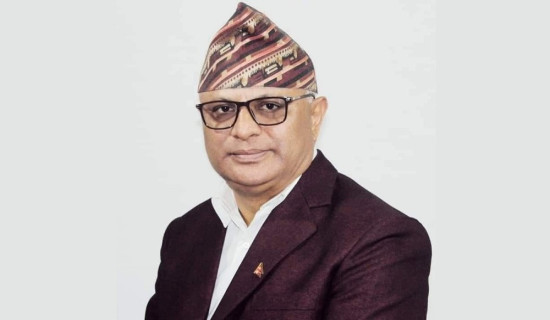- Friday, 2 January 2026
Overhaul Revenue Collection
The government has recently stepped up its spending. And a lion's share of that expenditure has come through transferring funds from non-expending projects. Because the Act on Financial Procedures and Financial Responsibility permits the government to spend the current fiscal year's budget through transfers, revisions and additional disbursements, should the earmarked money fails to get spent. Over the period of last one month, around Rs. 1.63 billion is reported to have been spent by government bodies, out of which the largest sum was transferred from the Ministry of Health and Population (Rs. 644 million) and the Ministry of Physical Infrastructure and Transport (Rs. 488.6 million).
According to the Ministry of Finance, Rs. 3.2 million has been transferred for the health sector reform programme to pay the salaries and allowances of doctors and health workers on scholarship contracts. Similarly, Rs. 148.5 million has been released to pay the amount provided at the rate of Rs. 5000 per month for the medical expenses of those who have undergone kidney transplant, dialysis, cancer patients and individuals with spinal injuries. What's more, Rs. 492 million has been transferred to 28 local levels to fund the construction of hospitals there. In a similar vein, expenditures have also been made for the construction of corridor, highways and bridges, as well as industrial and electricity infrastructure.
Though any spending by a government is a welcome news across the sectors, especially the private sector, such transfers of money hint at the shortcoming on the part of government bodies to spend the money set aside for them on the basis of their supposed need. This problem has necessitated meticulous planning by experts that takes into account every probable event. Abysmally low capital expenditure has been a drag on all three tiers of government. But there are also other pressures our economy is grappling with: shortfall in revenue collection and growing government liabilities. The liabilities have increased in the sectors of salary, pension, social security allowances, domestic and external debts, among others.
The country's public debt quadrupled in the last eight years, growing from Rs. 540 billion to Rs. 2.38 trillion, most of which had been borrowed to fund the post-2015 earthquake reconstruction spree. It now accounts for over 44 per cent of national GDP. With such dramatic growth, money needed to service the debt has also soared. This year, the government has allocated Rs. 330 billion to pay back the loan and interest, which accounts for 18 per cent of the budget. How will the government cover its growing expenditures if its revenue keeps falling? The pressure is already being felt in areas like pension, healthcare and infrastructure building.
Most of that shortfall is attributed to lingering effect of ban on the import of luxury items put in place until one-and-a-half years ago which deprived the government of crucial revenue through customs duty and VAT. But the thing is the economy, experts say, will no longer be able to withstand the pressure in business as usual scenario. It's no secret that growing fiscal muscle calls for widening the tax base. One such step will be formalisation of the country's vast informal sector. Lowering the taxes in some sectors and bringing yet-to-be taxed sectors into tax net can bring the much-needed money to the government coffers.

















